
Tattershall is a village and civil parish in the East Lindsey district of Lincolnshire, England. It is situated on the A153 Horncastle to Sleaford road, 1 mile (1.6 km) east from the point where that road crosses the River Witham. At its eastern end, Tattershall adjoins the village of Coningsby, with the two being separated by the River Bain and is 1 mile (1.6 km) south-east from the hamlet Tattershall Thorpe.
Haselbech is a village and civil parish in West Northamptonshire in England. At the time of the 2001 census, the parish had a population of 87 people. The population remained less than 100 at the 2011 Census and was included in the civil parish of Kelmarsh.
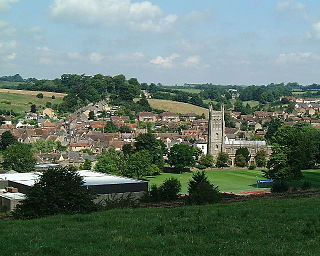
Bruton is a market town, electoral ward, and civil parish in Somerset, England, on the River Brue and the A359 between Frome and Yeovil. It is 7 miles south-east of Shepton Mallet, just south of Snakelake Hill and Coombe Hill, 10 miles north-west of Gillingham and 12 miles south-west of Frome in South Somerset district. The town and ward have a population of 2,907. The parish includes the hamlets of Wyke Champflower and Redlynch. Bruton has a museum of items from the Jurassic era onwards. It includes a table used by the author John Steinbeck on a six-month stay. The Brue is flood-prone – in 1768 it wrecked a stone bridge. The 242.8 mm of rain that fell on 28 June 1917 left a river watermark on a pub wall 20 feet above the mean. In 1984 a protective dam was built upstream.
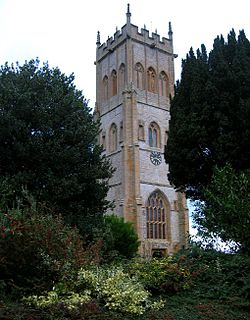
Long Sutton is a village and civil parish in Somerset, England, situated 4 miles (6.4 km) south of Somerton in the South Somerset district. The village has a population of 833.

Maperton is a village and civil parish in Somerset, England, situated 3 miles (4.8 km) south west of Wincanton in the South Somerset district. The village has a population of 140. However, this small number includes Elliscombe House care home which alone has an average of 40 residents.

Burlescombe is a village and civil parish in the Mid Devon district of Devon, England. The parish is surrounded, clockwise from the north, by the parishes of Holcombe Rogus, Culmstock, Uffculme, Halberton and Sampford Peverell. According to the 2001 census it had a population of 911. The village is about 5 miles (8.0 km) south west of Wellington in Somerset. The ruins of the 12th century Canonsleigh Abbey are nearby. Burlescombe is part of the electoral ward of Canonsleigh. The population of this ward was 3,218 at the 2011 Census.
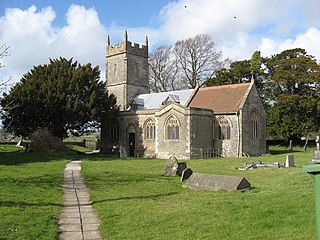
Ston Easton is a linear village and civil parish in the English county of Somerset. It is 14 miles (23 km) southwest of Bath and 7 miles (11 km) north of Shepton Mallet. It forms part of the Mendip district and lies along the A37 road 11 miles (18 km) south of the cities of Bristol and Bath and to the west of the town of Midsomer Norton. The parish includes the hamlet of Clapton.

Yarlington is a village and civil parish, near the source of the River Cam, in the English county of Somerset.

Woodeaton or Wood Eaton is a village and civil parish about 4 miles (6.4 km) northeast of Oxford, England. It also has a special needs school called Woodeaton Manor School.
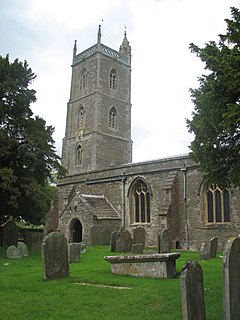
Holy Trinity Church is an Anglican Church in Nailsea, Somerset, England. It dates from the 15th century and is a Grade I listed building. It features a tower with 6 Bells, a cemetery, and a community centre called "The Trinity Centre".

Huish Champflower is a village and civil parish in Somerset, England, three miles north-west of Wiveliscombe and ten miles north of Wellington. It has a population of 301.

Pitcombe is a village and civil parish 1 mile (2 km) south-west of Bruton and 5 miles (8 km) from Wincanton in Somerset, England. It has a population of 532. The parish includes the hamlets of Cole and Godminster.
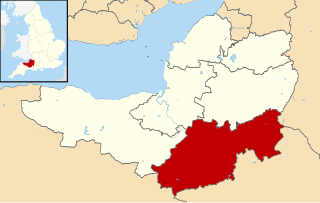
South Somerset is a local government district in the English county of Somerset. The South Somerset district occupies an area of 370 square miles (958 km2), stretching from its borders with Devon and Dorset to the edge of the Somerset Levels. The district has a population of about 158,000, and has Yeovil as its administrative centre.
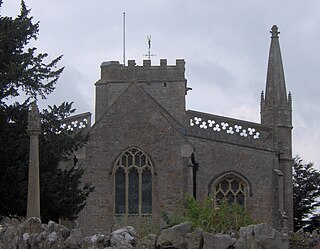
The Church of the Holy Trinity in Burrington, Somerset, England, is from the 15th century and was restored in 1884. It is a Grade I listed building.

The Church of The Holy Saviour in Puxton, Somerset, England, dates from the 13th century. It is recorded in the National Heritage List for England as a designated Grade I listed building, and is a redundant church in the care of the Churches Conservation Trust. It was vested in the Trust on 1 August 2002.

The Church of the Holy Trinity at Chantry, in the parish of Whatley, Somerset, England, dates from 1844 to 1846. It was designed by George Gilbert Scott and William Moffatt, with further work by William George Brown of Frome, for James Fussell, who owned the Old Iron Works, Mells. It is a Grade I listed building.

The Church of St Mary in Bruton, Somerset, England was largely built in the 14th century. Like many Somerset churches, it has a very fine tower; less usually it has a second one as well. Simon Jenkins has called Bruton's tower "Somerset architecture at its most powerful." It has been designated a Grade I listed building.
The Dogs in Wincanton, Somerset, England was built around 1650 and has been designated as a Grade I listed building.

Holy Trinity Church is a medieval building situated next to Millom Castle near the town of Millom, Cumbria, England. It is an active Anglican parish church in the deanery of Furness, the archdeaconry of Westmorland and Furness, and the diocese of Carlisle. Its benefice is united with those of St George, St Anne, Thwaites, and St Luke, Haverigg. The church is recorded in the National Heritage List for England as a designated Grade I listed building.
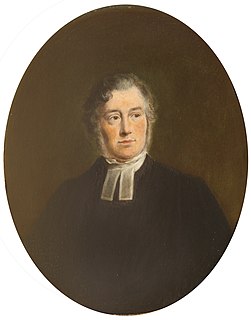
Richard Michell (1805–1877) was an English churchman and academic, the first principal of the second foundation of Hertford College, Oxford



















